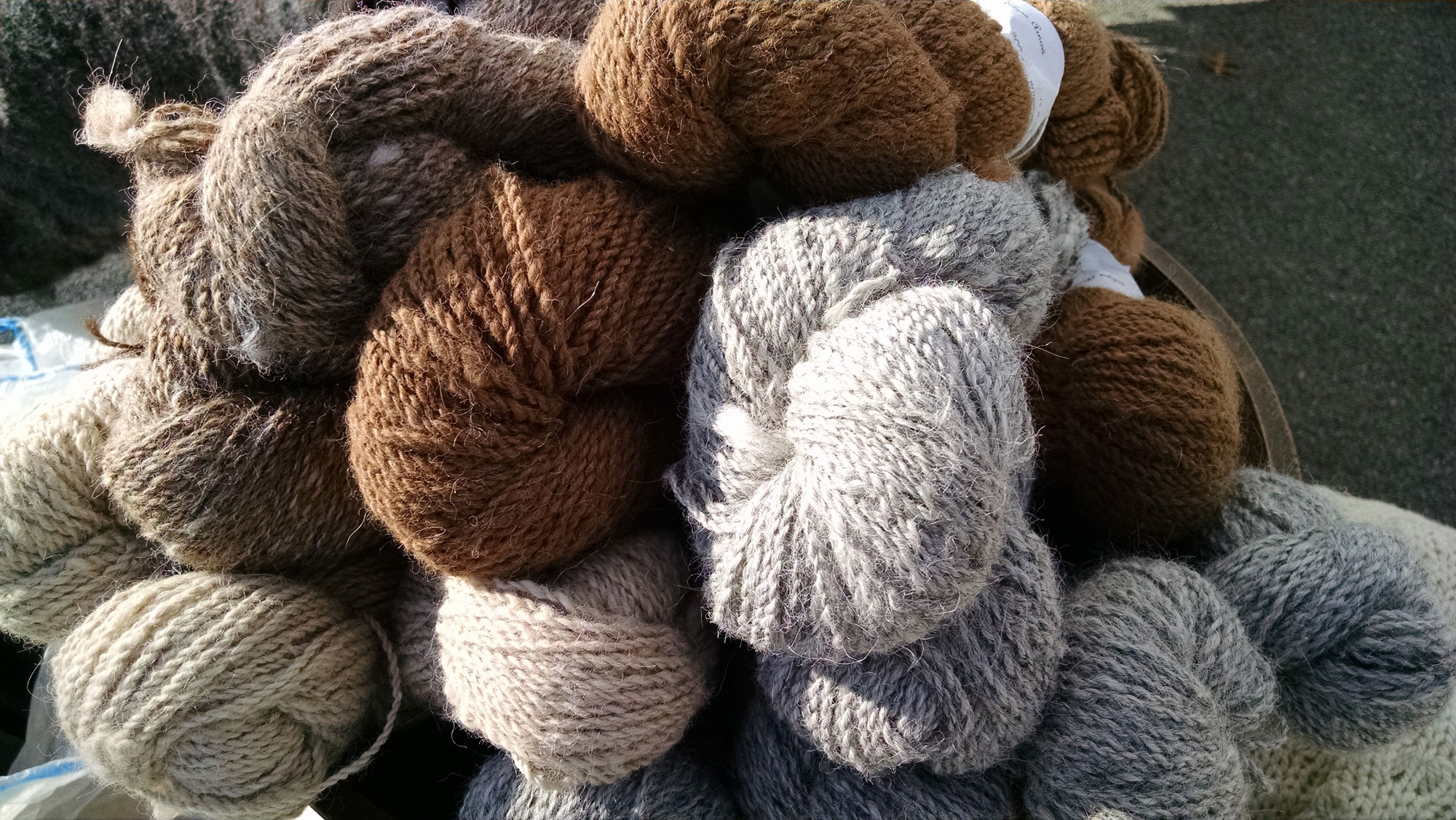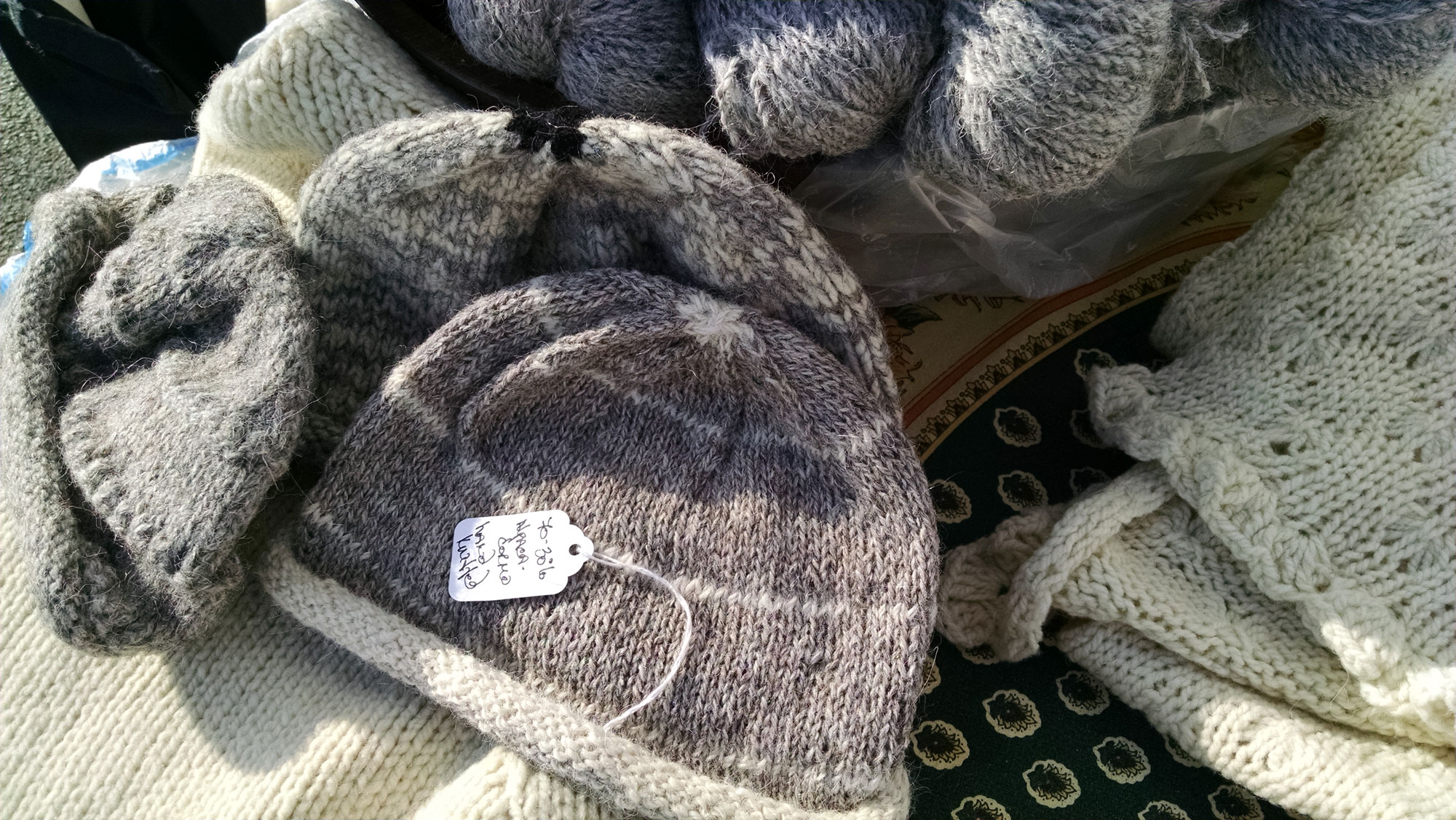Facts About Alpaca Fiber

Baby Eclipse Calypso
Alpaca’s fiber protects them well from our northeast winters. Their native habitat is high in the Andes Mountains. In adapting to this often harsh environment, alpacas have developed a thick insulating blanket which is comprised of millions of extremely fine fibers, having very small diameters. Their hair shafts have a hollow core which traps insulating air. In addition, the fiber crimp gives a bulkiness to the yarn. This bulkiness prevents fibers from packing too closely together, again providing insulation from trapped air. These qualities provide not only comfort to the animals, but also to those who wear garments made from alpaca fiber.
Alpaca fiber is a luxury fiber that is known for its ‘hand’; it feels wonderful, light, soft and warm. It comes in a full spectrum of natural colors from pure white to fawn, grey, shades of brown and pure black. Alpaca fiber has many wonderful qualities that make it an exceptionally versatile fiber, able to undergo different fiber preparations, spinning styles, construction techniques and garment types. Varying shades of caramel, silver and rose greys as well as black, gives the fiber artist a wealth of opportunities for design and craft. Natural whites provide fertile ground for great results dyeing bright colors as well as using the variations arising from light and dark natural highlights in the wool, sometimes for a ‘tweedy’ look. Much of the dyed coloring can complement the natural base color. Interesting results can come from plying two or more strands of different colors together in the same handspun yarn.
The natural colored yarns will not bleed or fade because the color is inherent in the structure of the fibers. Alpaca fiber takes dyes very well so little fading should be expected. Both natural and synthetic dyes work well. If properly cared for, alpaca garments will last for many years without signs of wear.
Quality alpaca fiber breeders breed for conformation balance but also for fineness of blanket fleece. Factors considered in breeding include the quality of the parent fleece and coverage from the wool cap, neck, and into the leg. Low average micron counts are important (ideally below 20 in the first and second years, and low 20s the following years), tested by blanket and grid samples. We look for uniformity and extension of blanket fiber through the brisket, shoulder, hip, neck and upper leg. We assess luster or brightness (some animal’s fiber actually shines!), staple length (a minimum of 3 inches a year), volume, crimp and overall character. A strong breeding program founded in highly prized animals will branch itself into excellent genetics to sustain consistently pedigree alpacas.

Besides genetics, three major factors have an impact on fiber diameter: age, sex and level of nutrition. As an animal matures, its fiber tends to have a higher or coarser micron value. Males sometimes have higher micron values than females and the level of overall nutrition can significantly affect fiber diameter as well. For more information about histograms and how to read them, contact Yocom-McColl Testing Laboratories, Inc. in Denver, Colorado or visit their website: www.ymccoll.com.
Our farm goal is to broaden the market “made in America” to “grown in America on family farms”. Our farm products speak to individuals who are environmentally conscious and educated about how organically created and processed products can change our overly industrialized world view and facilitate the experience of human connectedness to the planet and other creatures. We are intent on breeding and raising alpacas for high quality fiber in conjunction with solid confirmation and pleasant temperament. Finer fleece translates into a higher quality product with a difference you can see and feel.
 Alpacatrax
Alpacatrax 




You must be logged in to post a comment.